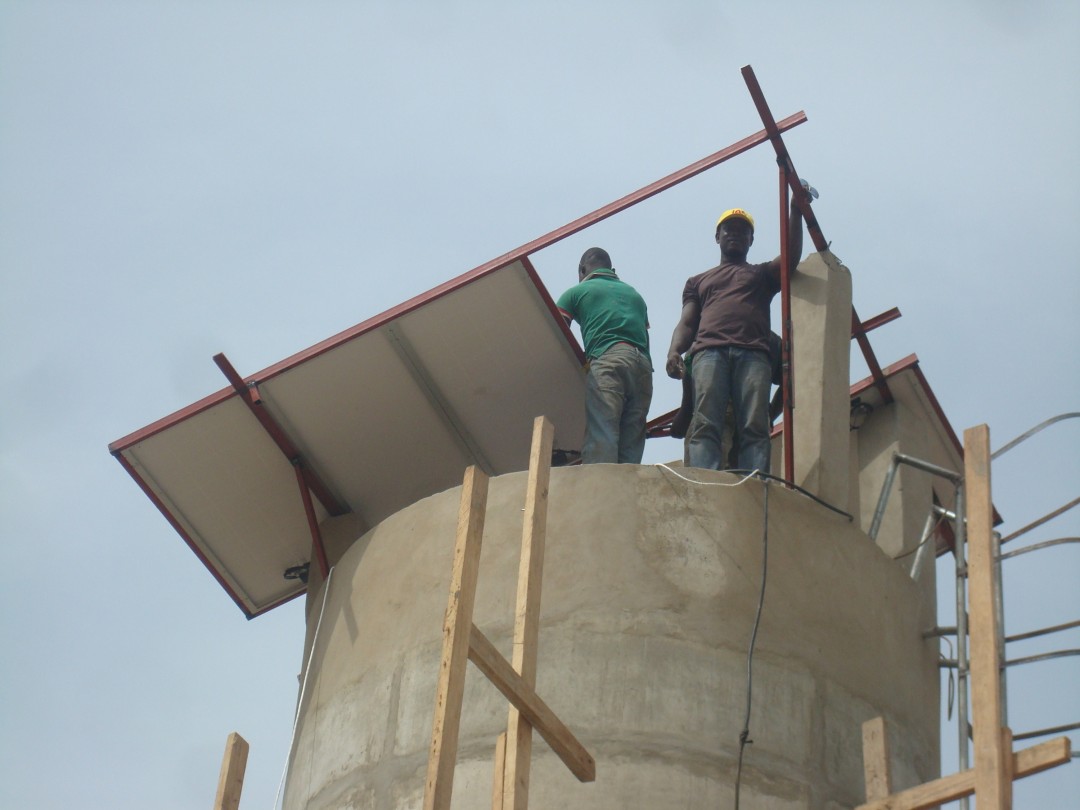Drinking water for a vocational training centre
The project aimed to equip the PERFECT vocational training centre with a solar-powered water supply system with a pump capacity of 10,000 litres a day. The project included the construction of a cement water tower and the installation of a distribution network to supply both the training centre and its neighbourhood.
The construction of the cement water tower was finalised in the first weeks of 2015. In December 2014, the solar powered pump and distribution network were extensively tested and put into service. The position of the pump was subsequently lowered to reach the underground water source and, from then, the system functioned as planned, pumping on average, in 2015, 3,456 litres/day. 62% was sold to the population in the neighbourhood and the rest to the PERFECT vocational training centre. The funds from the sale of the water were collected by the water committee for future repairs, such as replacing broken taps and eventually the electro-solar pump.
The Swiss association Ingénieurs et Architectes Solidaires (IAS) brings together professionals and students who are interested in alternative technologies. It works on a voluntary basis to install systems that are adapted to developing countries that lack energy resources.
Type
HealthDuration
November 2014 – June 2015Location
Sotouboua / TogoWith whom
Ingénieurs et Architectes Solidaires (IAS)
Website



Togo
Population
7.8 million (2017)
Per Capita Income
USD 610/year (2017)
Poverty rate *
55% (2015)
Literacy rate
64% (2016)
Human Development Index
165th out of 189 countries (2018)
Togo has made considerable progress in addressing its development challenges, though significant institutional and economic challenges remain. Poverty has been reduced, from 62% in 2006 to 55% in 2015, but remains high. The acute malnutrition rate countrywide is 5% and 30% of young children are stunted. There has been progress in universal primary education and the control of HIV/AIDS. Maternal mortality remains high, in particular due to the lack of prenatal visits, a result of low incomes and poor access to health services. Access to clean drinking water is improving, though it remains insufficient. Only 34% of the population uses clean water, due to the lack of infrastructure and unequal distribution of drinking water, despite the country's abundant water resources.
Sources: World Food Program, UNICEF, World Bank, 2016 Human Development Report, Human Development Indices and Indicators (2018 Statistical Update)
*The percentage of the population living below the national poverty line.